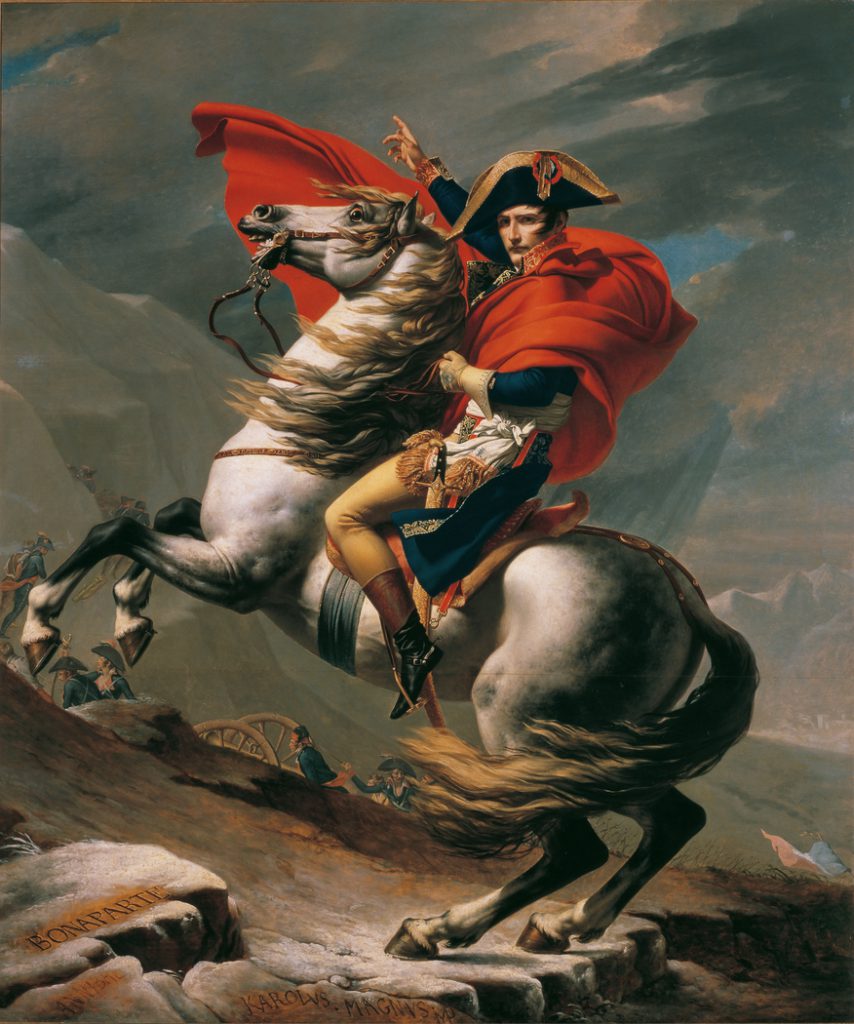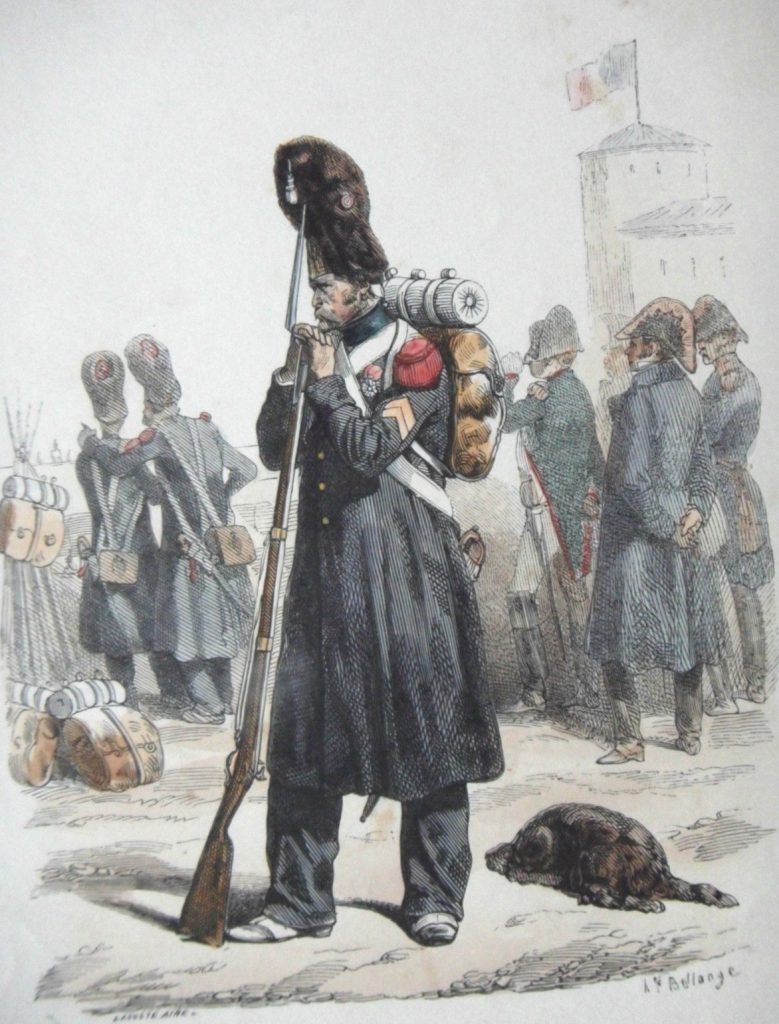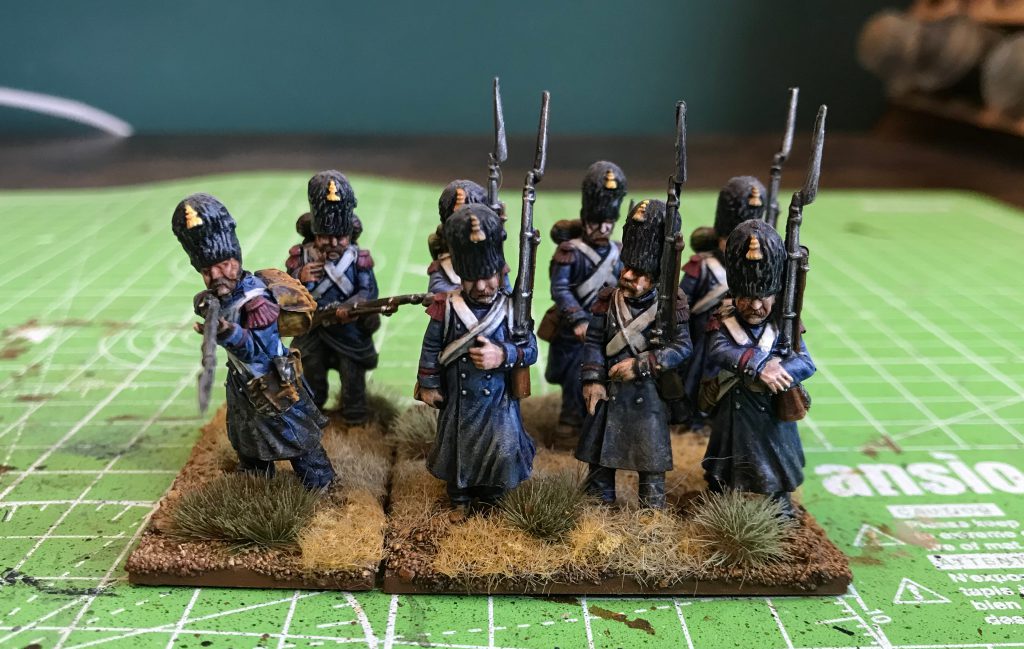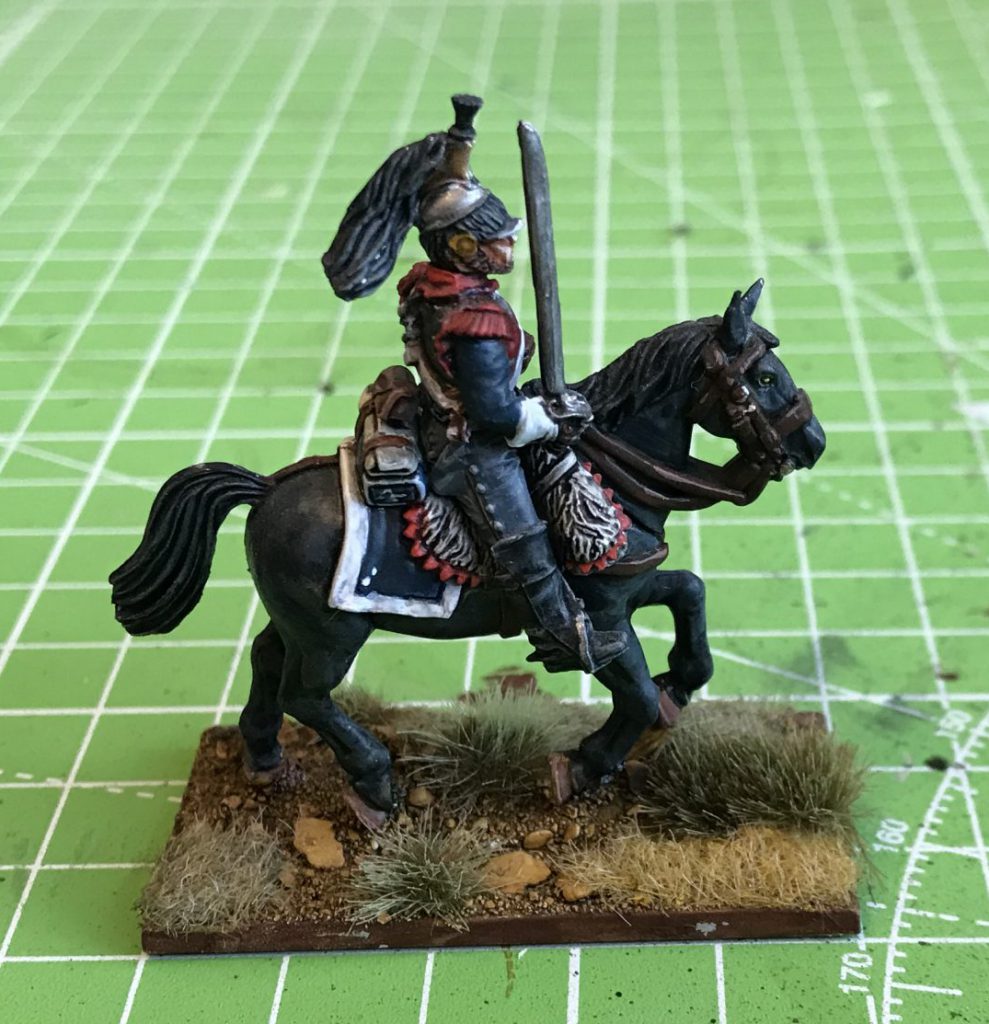Surprisingly, for someone with a love for Historicals gaming, and far too many abandoned projects in more or less every game goonhammer covers, I’ve never picked up Napoleonics. There’s a good few reasons for this – the whole period didn’t seem as important as the second world war (who doesn’t love fighting the fash?), I didn’t study it at school (unlike a certain part of the 17th century), and as far as I understood it as a Brit, it was the story of some Corsican guy beating up the Hapsburgs, freezing to death in Russia and then being crushed by the British Army and Navy in some kind of combined amphibious action called Trafalgar-Waterloo. Then there was a confusing amount of exiling, and possibly the Holy Roman Empire ended? Seems…. surprisingly boring, another period of over-complicated continental history that was rendered irrelevant by the 20th century.
And then my local gaming club historicals scene decided that once we’re done with the English Civil War, we’re going to do Napoleonics. Not one to go into these things without a decent amount of knowledge, I read Lupe’s Getting Started: Napoleonics and started listening to The Age of Napoleon Podcast. Somewhere along the line, one thing really broke my brain.
Elan
I don’t think I’d ever thought, really thought, about Elan before. It’s the joke concept people throw about in WW1/2 wargaming – insufficient elan is the reason many a hail mary tabletop attack has failed. It means momentum – but also enthusiasm, drive, a certain elegance, the vital force that mobilises men to march in column into the teeth of enemy guns. It’s big men in big hats, lancers with pennants fluttering in the wind, uniforms where the designer said yeah good but what this needs is more gold braid and if possible an even taller hat – an amazing painting and modelling opportunity. It’s also a driven young man leading his undersupplied and underfunded army over the Alps and absolutely clowning on the Holy Roman Empire, then doing it again and again and again for 15 years of virtually endless stylish strategic pantings of the assembled crowns of Europe. It’s a nation throwing off the shackles of monarchy in order to don the slightly different shackles of another monarchy, but beating up the entirety of Europe in the process. 2022 is the year of Elan, the year of Napoleon.

“History is a set of lies agreed upon”
With all that said about Elan, there was only really one choice for this army. I feel too weird about high Imperial Britain on the tabletop to go with the home nation, Prussia and Austria have colours I don’t like painting, and I already have a 28mm Russian force (only a century and a half later at that). It has to be France. I want to roll dice and shout toujours de l’audace, and have generals called things like the Dear Child of Victory.
France seemed like a good shout, but not knowing much about the period beyond the headlines and where I’m up to in the Age of Napoleon Podcast (not far), that leaves a lot to be worked out. So I went down my starting a project checklist:
- Theme. All my army projects have a theme. My 40k Genestealer Cult are a medieval town, my WW2 Soviets a last-ditch defence of Moscow, my English Civil War are slovenly lads from back up ‘ome. There’s got to be something for me above and beyond the period to get me into a project.
- Accuracy. How accurate do I want the army to be to the history? When is the army supposed to be? Surprisingly, not all that important for me as I prefer things to be fun and interesting to paint and model, rather than slavishly accurate, but still worth considering.
- Quality. Is this a quality project or a quantity project? Is it going to be a horde army, or a hard as nails core of fighting bastards?
- Painting. How bored am I going to get painting something I hate painting (like horses), or extremely complicated colour schemes. What paints do I already have?
- The Je Ne Sais Quoi – something a little bit extra that makes a project different and fun. Might be theming units to syncretic future religion like in my 40k Sisters, or matching each living unit to an undead one in my Oathmark force. Whatever it is, a new project has to have something extra for me to really give a shit about it.
It was the last one that got me. I’ve been playing wargames for 30 years or more now, and spend probably about as much time complaining about how a certain rule was done better in ’98, or how Eldar playing kids these days don’t know how lucky they are with release schedules, or how back in the day a tactical squad cost a tenner and only had one flamer and we liked it that way. While (hopefully) I’m not an arsehole about it, I am definitely a grognard. I knew grognard was a french word for a grumbling old soldier – It’s in the magnificent WW1 diaries of Louis Barthas, the greatest soldier-diarist of all time, but a little digging revealed that it had a very particular meaning in the Napoleonic period.
grognard (plural grognards)
From the French grognard “grumbler”
- an Old Soldier
- A soldier of the Imperial Guard of Napoleon, who made the final French charge at Waterloo
- Someone who plays old editions of wargames and grumbles about it
This gives me a solid theme, a general tone to aim for for accuracy – but still room to have fun with grizzled veterans – a focus on quality, a fairly easy paint scheme I can use my old Ultramarines paints for and a whole heaping dose of je ne sais quoi.

Les Grognards, c’est Moi
So that was the decision made for me really. It’s going to be a French Army of the Imperial Guard. Hard bastards supported by even harder bastards on horses, with some hard bastards shooting cannons to back them up. I don’t actually know much at the moment about the Imperial Guard, except that it’s a cool name and they were veteran soldiers. A bit of wikipedia research tells me that they were veterans of multiple campaigns, literate, expected to be insanely brave and had the right to bitch on about whatever they fancied all the time. They were tied to the man himself and were Napoleon’s final throw of the dice at the last gasp, so as a Napoleonics project, I don’t think they could be any more Napoleonic.
Plus, Victrix make some well reviewed Old Guard that are in heavy blue greatcoats, making them an easier first step into the period. I grabbed a box, stuck six on one base and two on another and painted them entirely using the box art as a guide.

I learnt a lot from doing this:
- There are at least two types of Old Guard, Grenadiers and Chasseurs. I know from English Civil War wargaming that Grenadier means “really big guy”, and Chasseur means hunter, but what this actually means on the battlefield and/or tabletop isn’t known to me. I bought Chasseurs.
- Cleaning up, assembling and painting 60 of these guys is going to take a long time
- The paint scheme is largely wrong, and if going for accuracy I’d have to ditch the contrast approach and lean into detail
- I need to think before basing. The 6 man looks amazing, just the right level of density to give some real heft, but whether it’s any good for gaming I don’t know.
Unfortunately (and please do let me know if you’ve done this, it’ll make me feel better), before I really started thinking about what this meant and the implications of this – or even how many men I wanted in a battalion, the project exploded from a single, reasonably priced box to a pile of shame in what I want to say was seconds. I threw together another three six-man bases of Chasseurs, bought a fairly random selection of Perry metals (even getting the clippers and modelling putty out because is an army without some headswaps even really an army?), three boxes of Perry plastics – two line infantry and some Cuirassiers – three ebooks and one big fat book. All bought on the basis of enjoying painting 8 men, and without a rulebook, plan or particular knowledge of the army or period at all.

“Nothing is more difficult than being able to Decide”
There’s not a rulebook in sight there, and that might end up being fairly important. I don’t know what ruleset I’m building for, or where I’m going with this at the moment. I know at the club we’ll play some games of Warlord’s Black Powder, and that’s a system I’m fairly familiar with as Pike and Shotte for the English Civil War is at base the same game. So I know that units should have a vague frontage range of about 200-250mm and that casualty removal isn’t all that important. A mix of six and two man bases should be fine. But then the other big game for Napoleonics is Too Fat Lardie’s Sharp Practice where movement trays for individually based models seems to be the way forward. I can use dice for model removal, but that doesn’t look too good, and then there’s skirmish units and working out all that as well – time to read Muggin’s article on basing for Sharp Practice for inspiration.
I’ve even gone and bought the wrong models for the theme, it appears – I want big men in big hats and filthy blue greatcoats, holding the final line at Waterloo or marching off to near certain death in Russia, but I’ve got small men in short jackets and jaunty white trousers. Even the cavalry aren’t quite the right cavalry – even though they look absolutely cracking and proper elan-filled, even though I haven’t quite finished painting the first test model as of writing.

To make matters worse, it turns out this whole period is a bit more complicated than I thought. Focusing in on the Guard doesn’t seem to have helped much either – Guard Artillery, Middle Guard, Young Guard, Marine Guard, Horse Guard and Horse Guard with different hats, Voltigeurs, Tirailleurs, Grenadiers but this time, 1812 uniforms, Velites of Turin (???), Eagles, Fanions, Drummers, Sappeurs (Sappers, presumably), and the apparently actually not that short figure of Napoleon looming over all of it. It’s a lot of stuff to learn before I can feel confident pointing to a unit on the table and saying “see these guys? In real life they were XYZ, and they are about to kick your teeth in” before making some ill-thought-through game losing move, and that’s one of my favourite things about Historicals. Fuck.
At least there’s some pointers towards goals there. This year, on my road to Austerlitz I will:
- Figure out what all of the above things about the Guards mean
- Paint an absolute shedload of 28mm Napoleonics for the Imperial Guard, enough to put the fear of God into the designers of any mass battle system, and dabble in some other scales as well
- Work out ways to do conversions, kitbashes and chops to fit the strange selection of models into the theme of the Guard with reasonable levels of historical accuracy
- Work out what rule systems I should be playing, and play them as much as possible
- Actually learn about the Napoleonic wars and maybe a bit of French as well
Seems enough to be getting on with – hopefully, with sufficient elan, I might even get there!
Have any questions or feedback? Drop us a note in the comments below or email us at contact@goonhammer.com.


